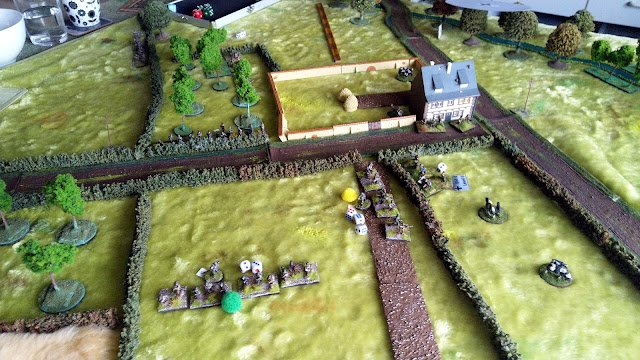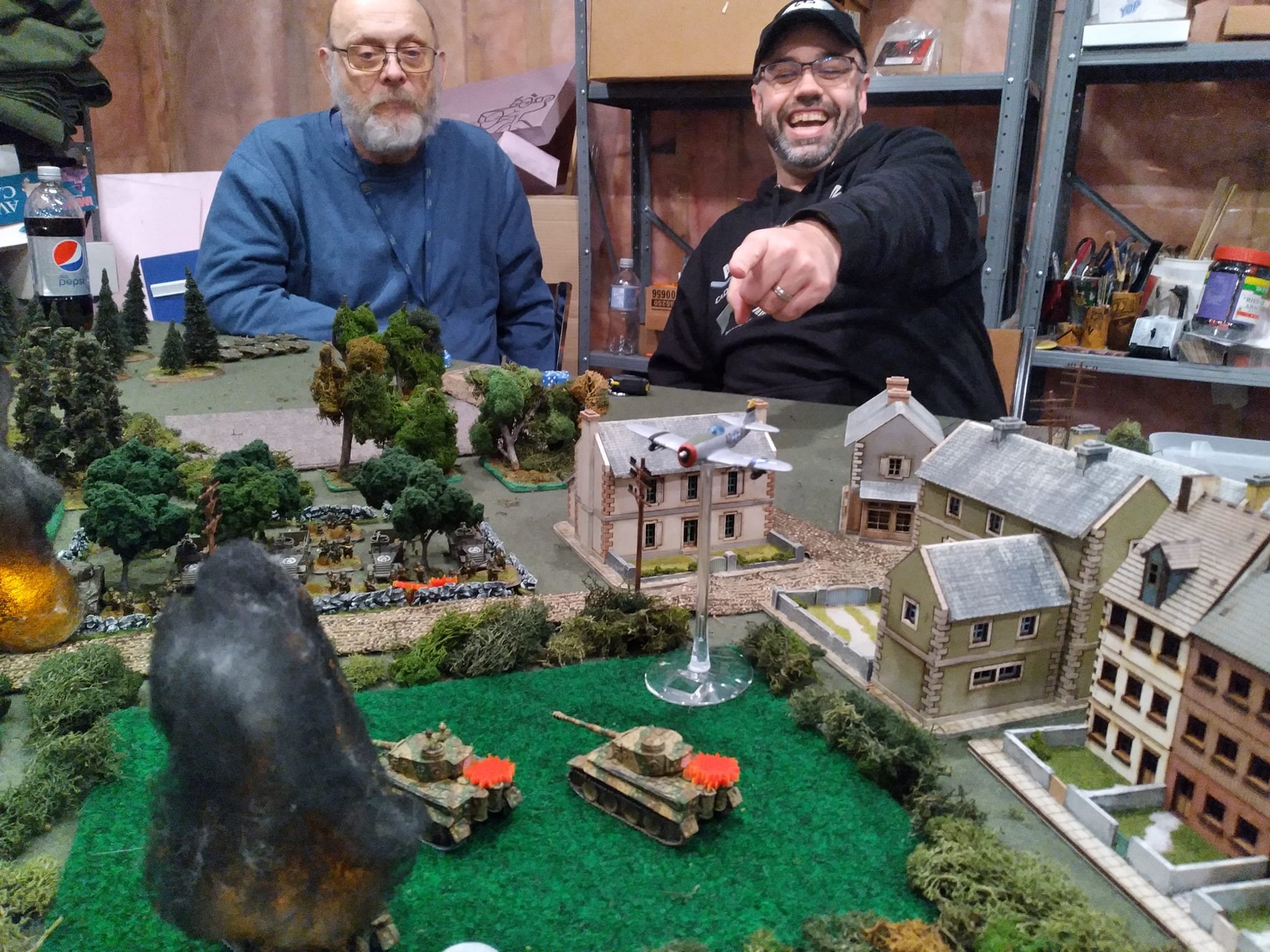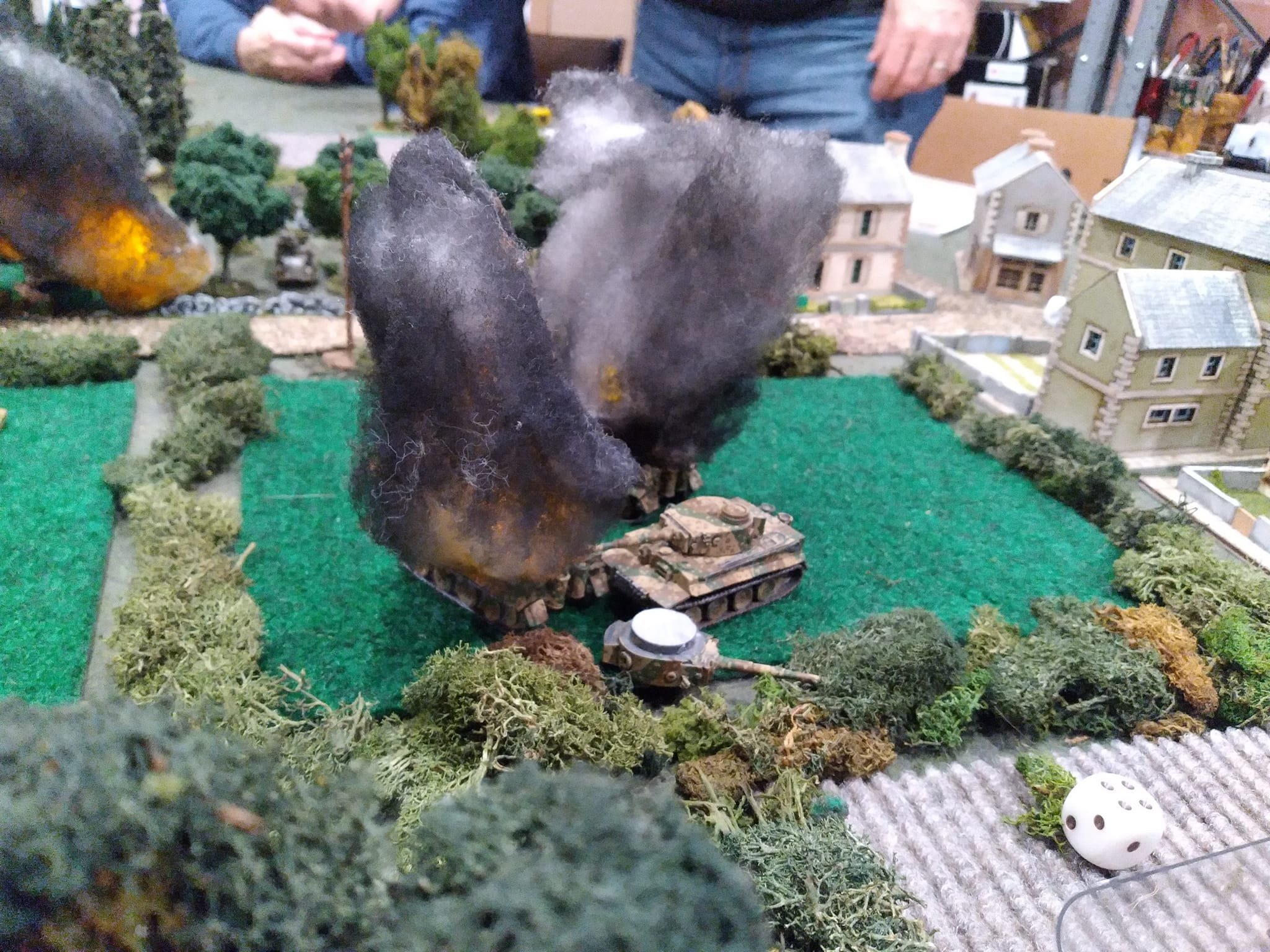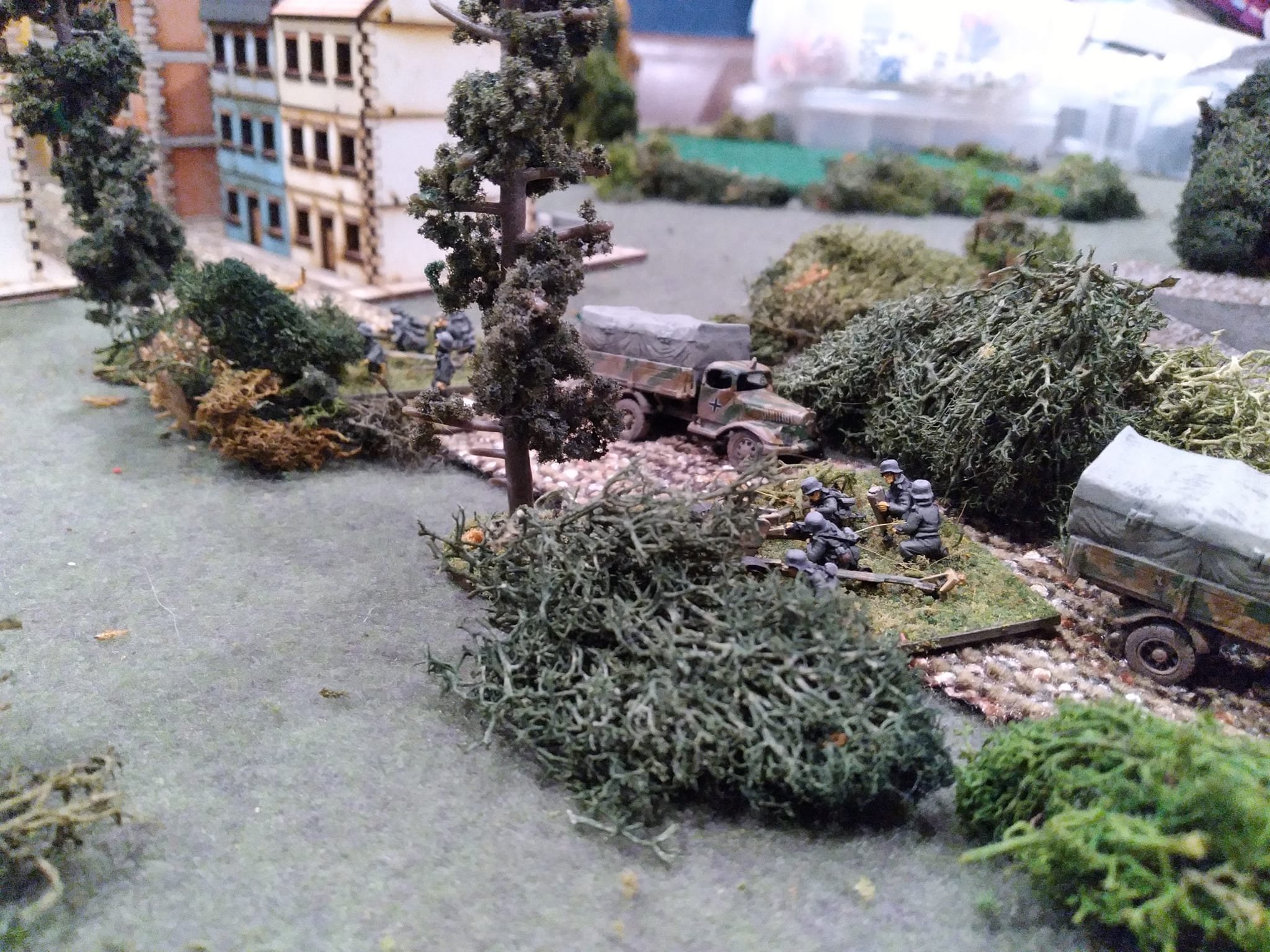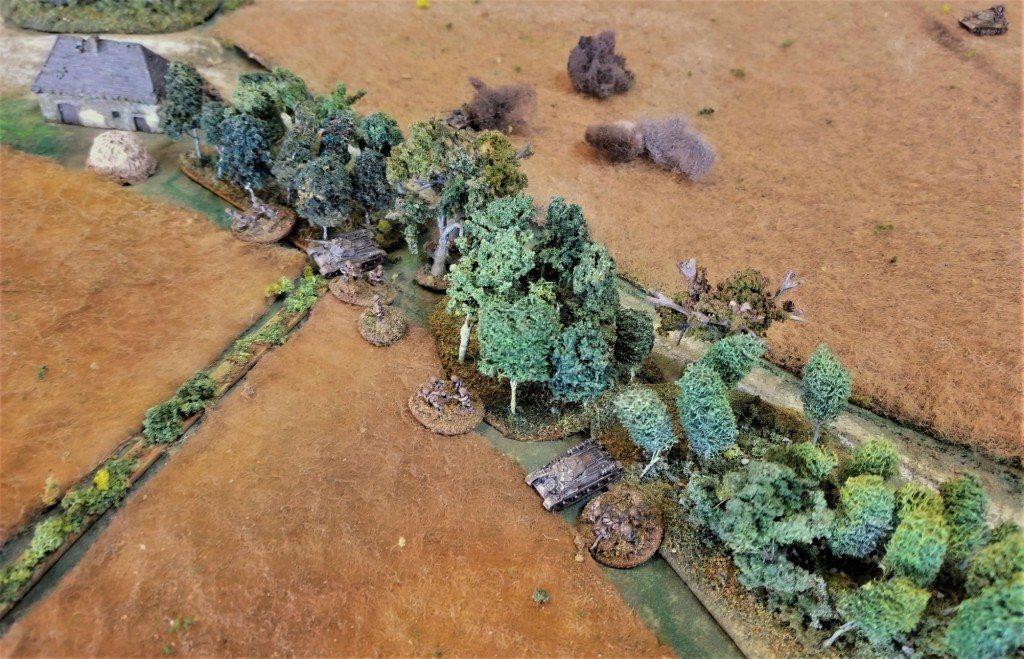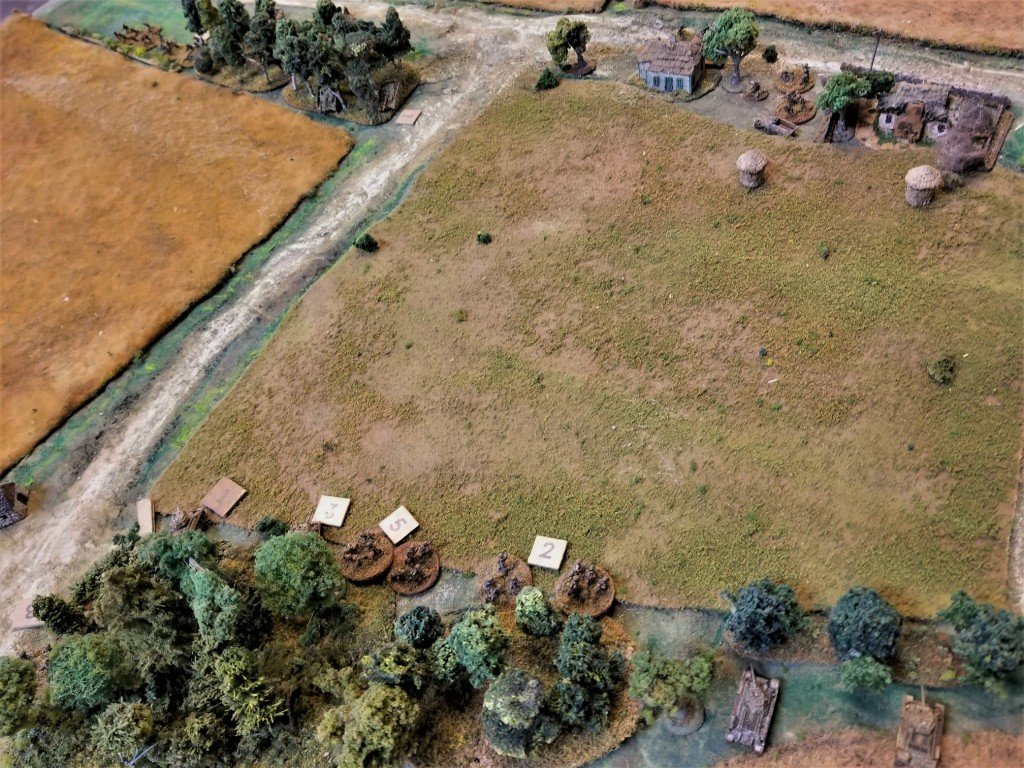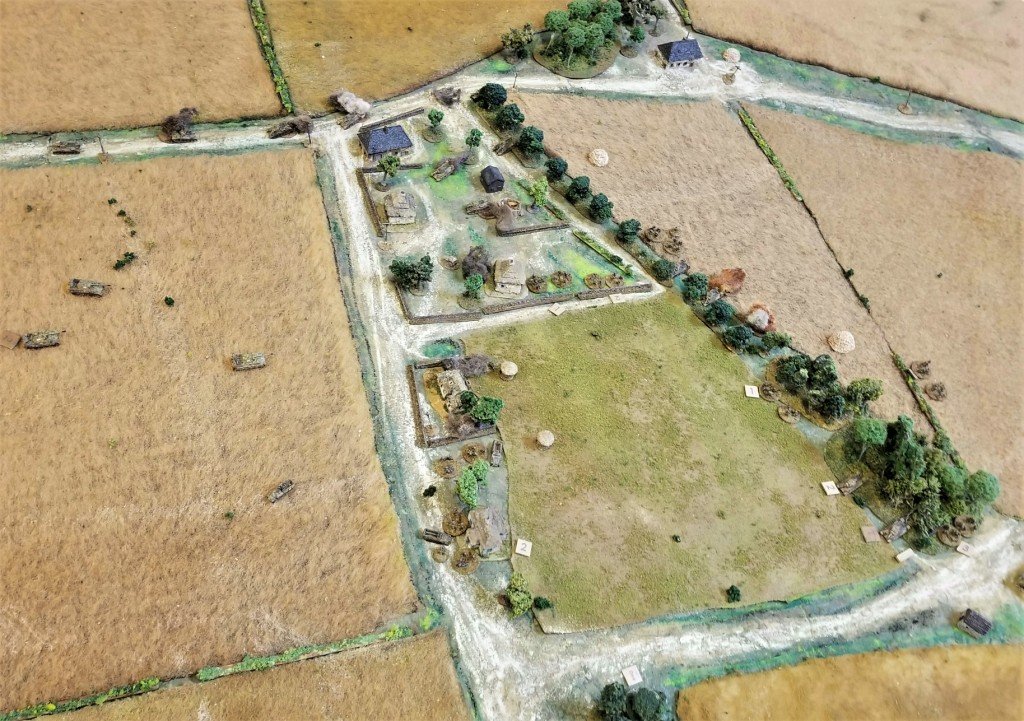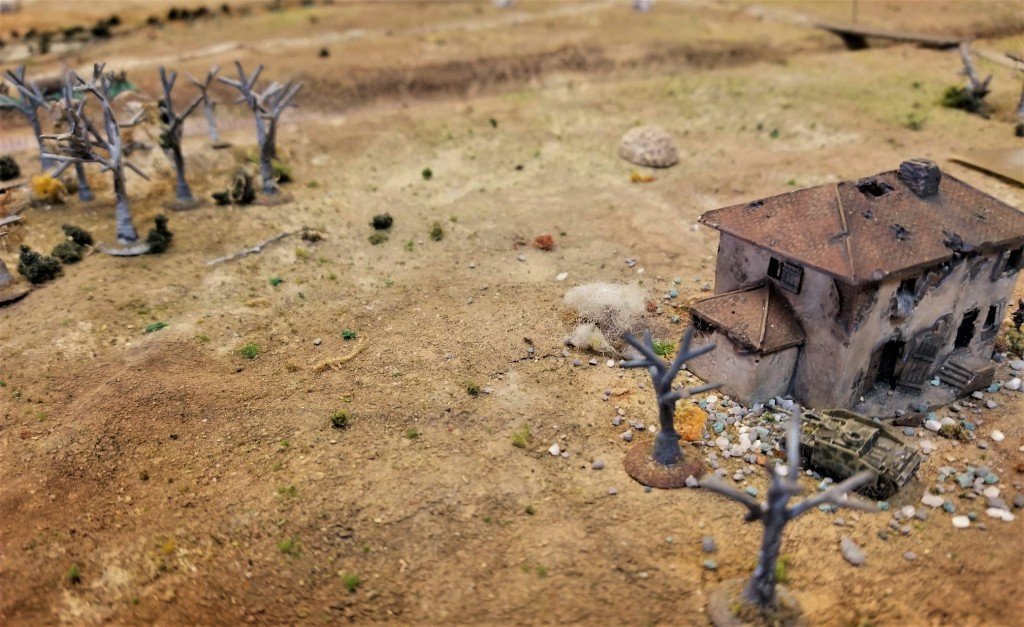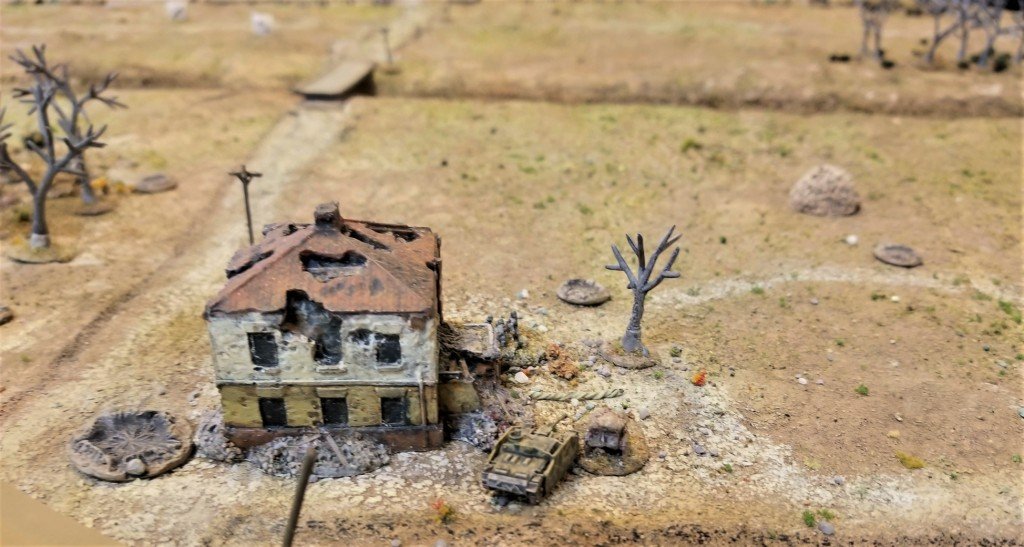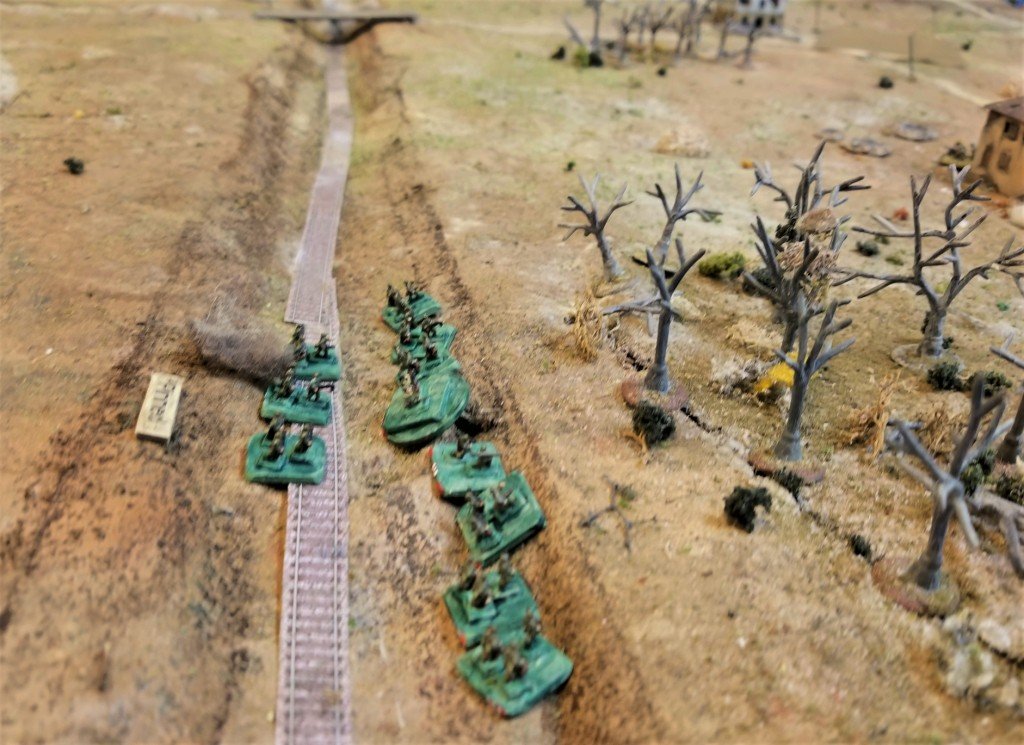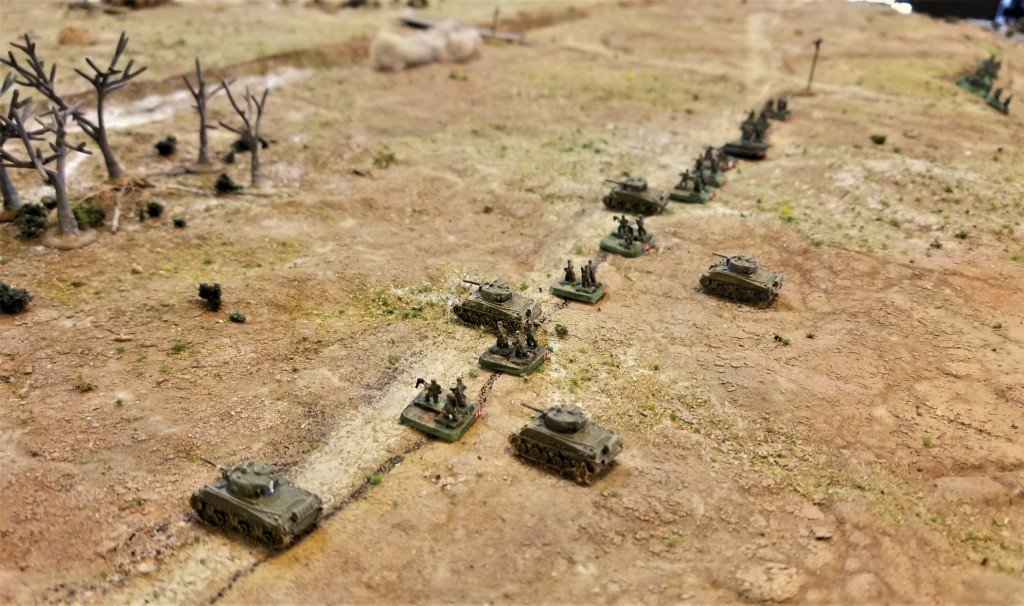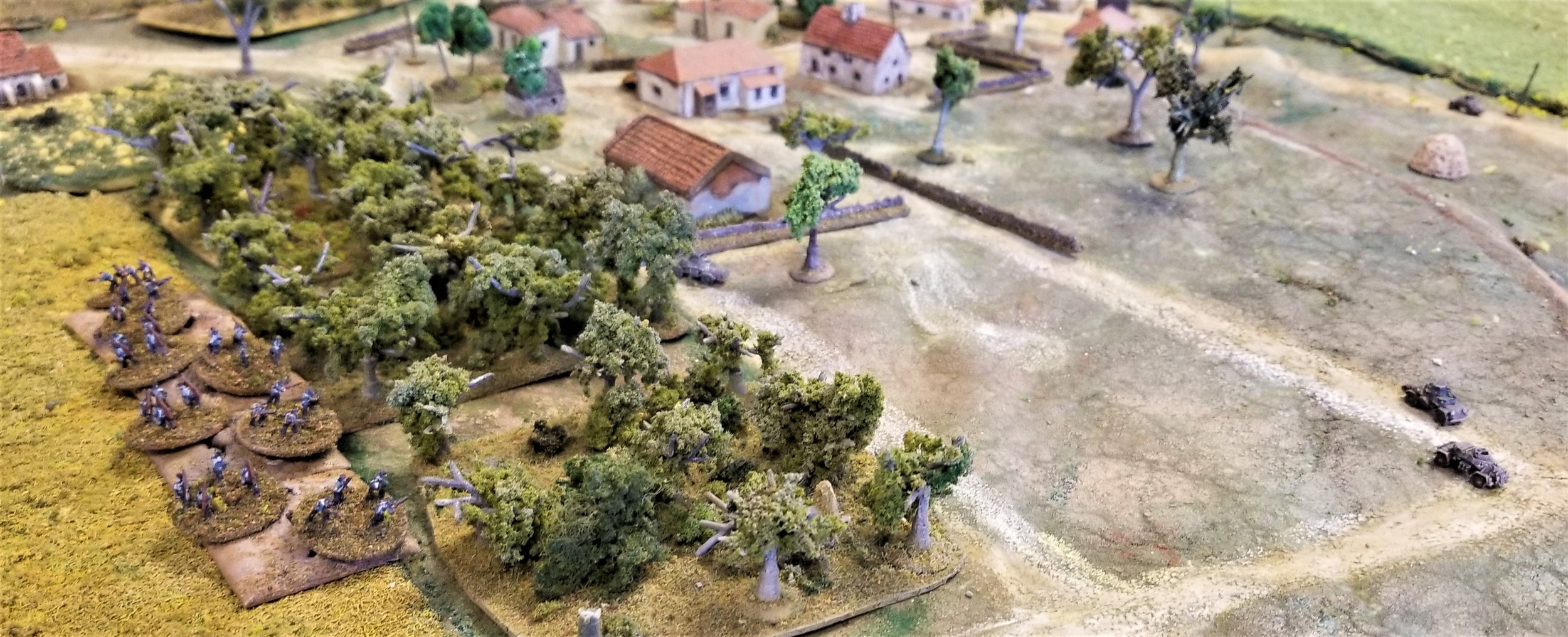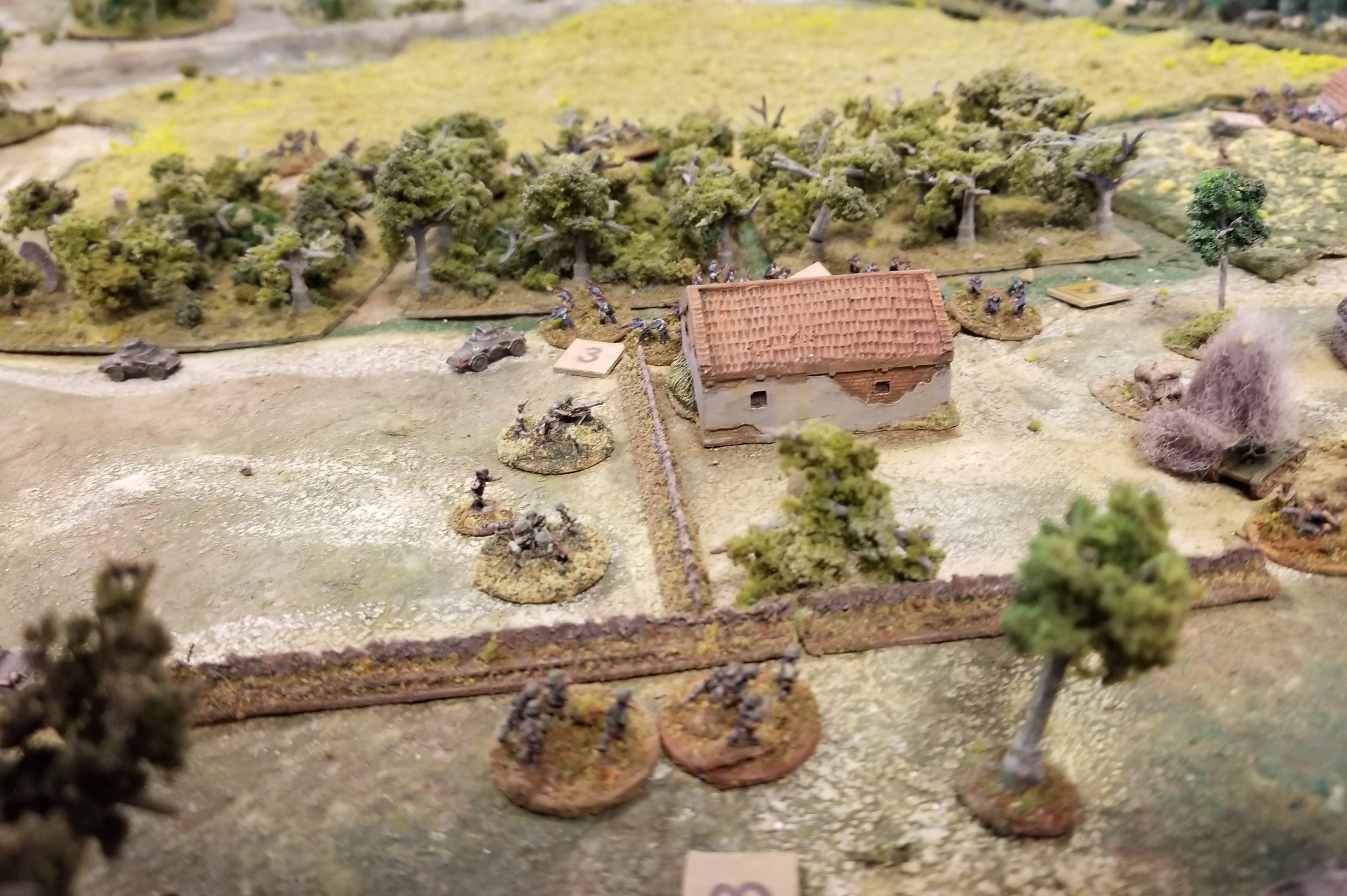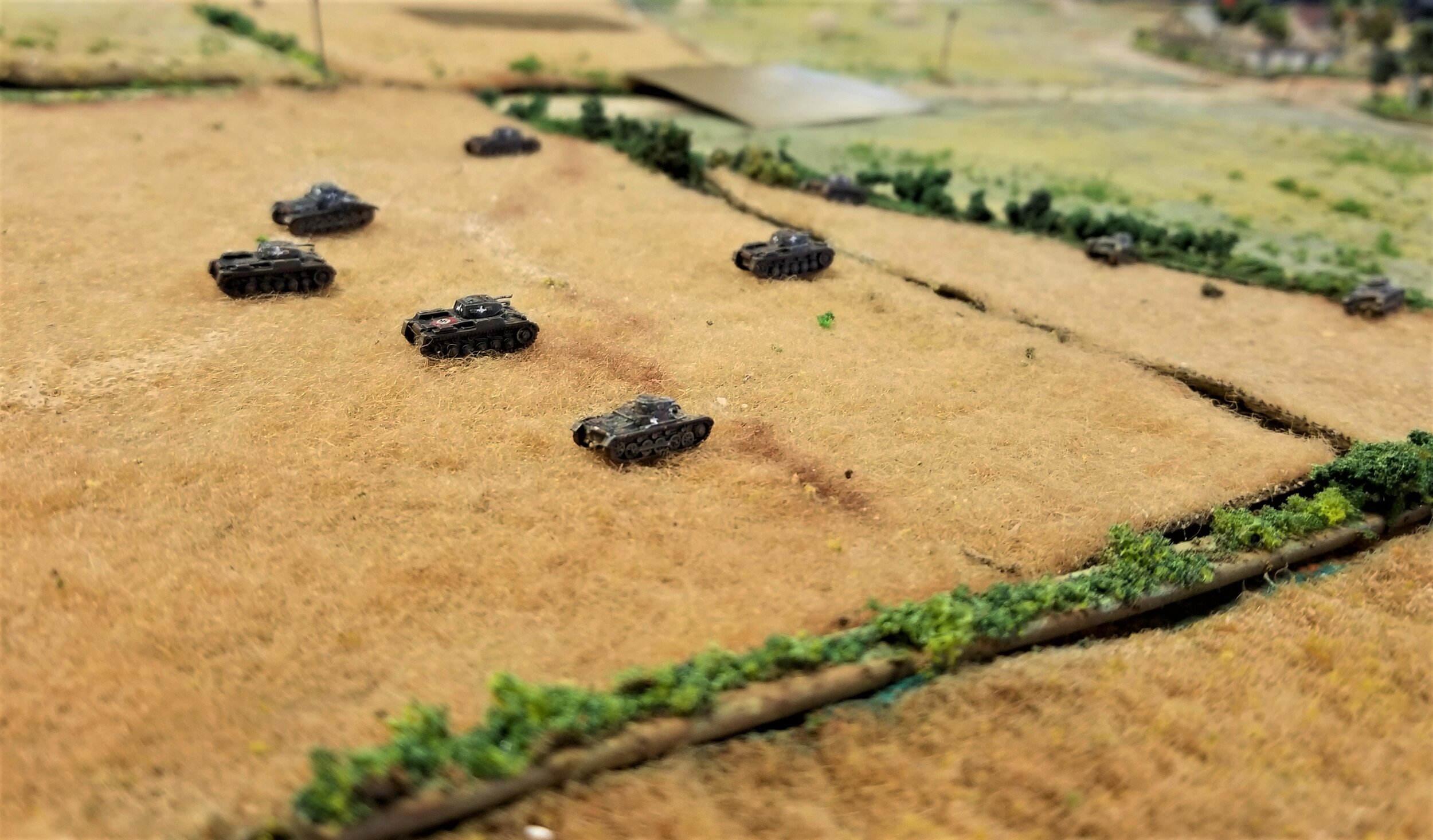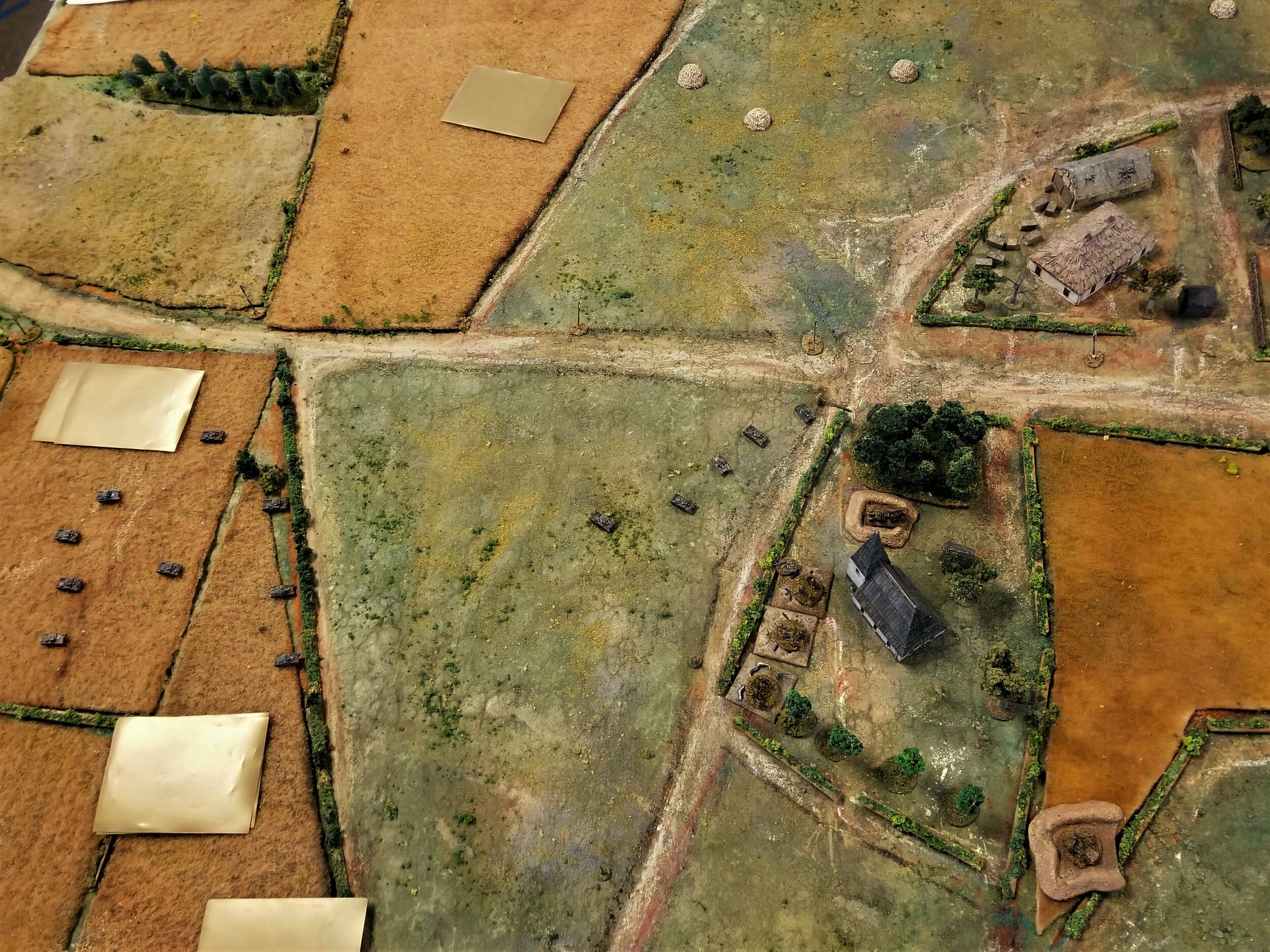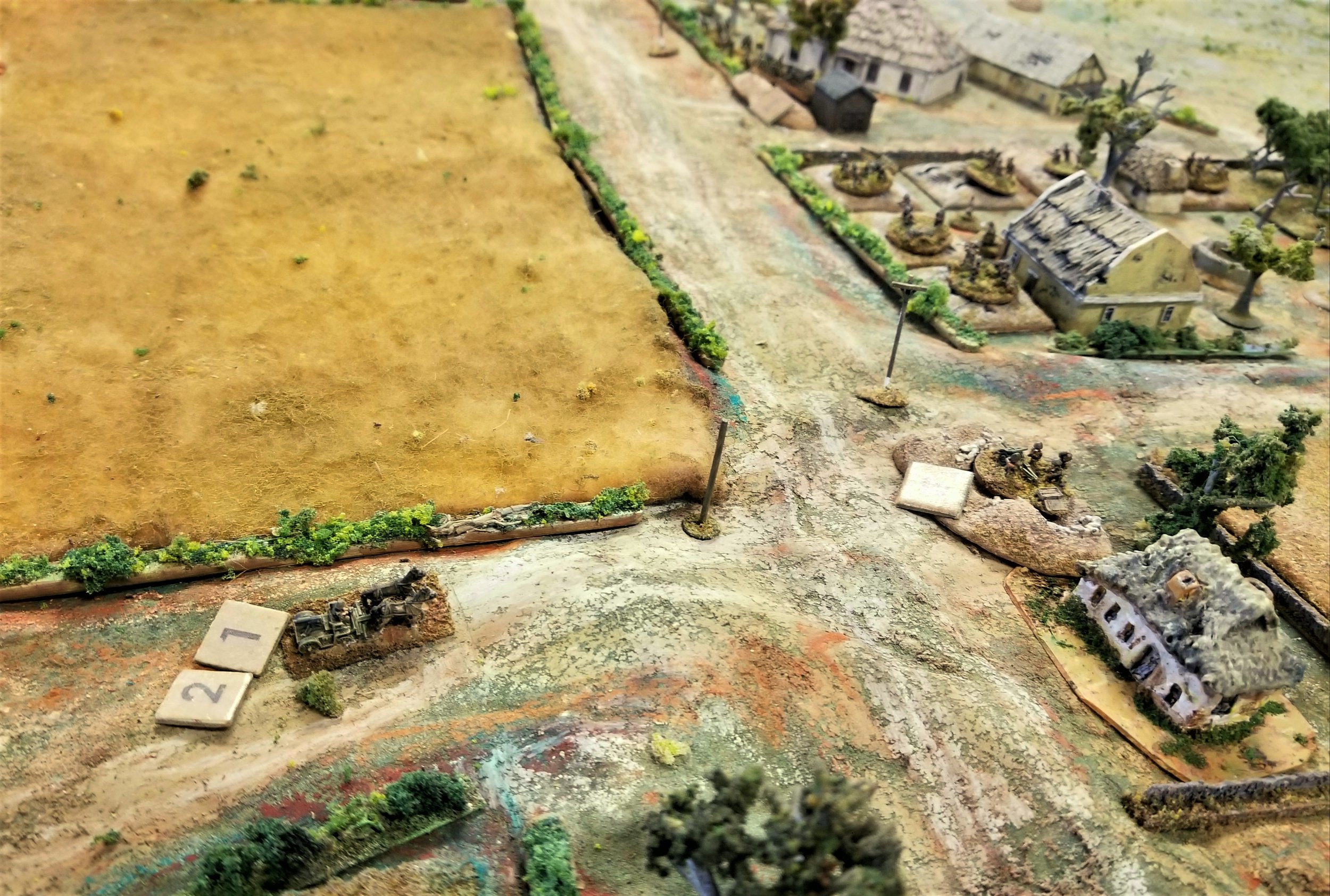Played one of the introductory scenarios from IABSM with Stephen 'South of Cherbourg'.
This is an all infantry scenario with regular Wehrmacht defending against advancing US troops. Been ages since we have seen Stephens Yanks on table with any rule set and ages since we have played IABSM.
Very enjoyable it was too despite less than stellar card sequencing for Germans even with two 'Tea Break' cards in deck, I had two turns I got virtually no activations whilst Yanks had several.
Must say this sort of system really appeals to me as I prefer this to standard you go I go styles overall and IABSM works pretty well for the Company-a-side game it covers.
We failed to finish (spent way too much time waffling about our frustrations with ongoing Covid crap) but did get to see lots of action.
The on table 60mm mortars teams (3 of the buggers) seemed pretty effective especially compared to my largely ineffectual off board 81mm mortar battery.
This of course assume we were doing things correctly which not a given after so long away from rules, and still find some parts rather under explained despite this being a third edition.
We fluffed the auto spot and close combat rules somewhat forgetting that close combat is automatic when units end up 4" apart.
Still a fun outing and whets appetites to revisit them again in future.
Sergeant Steiner





